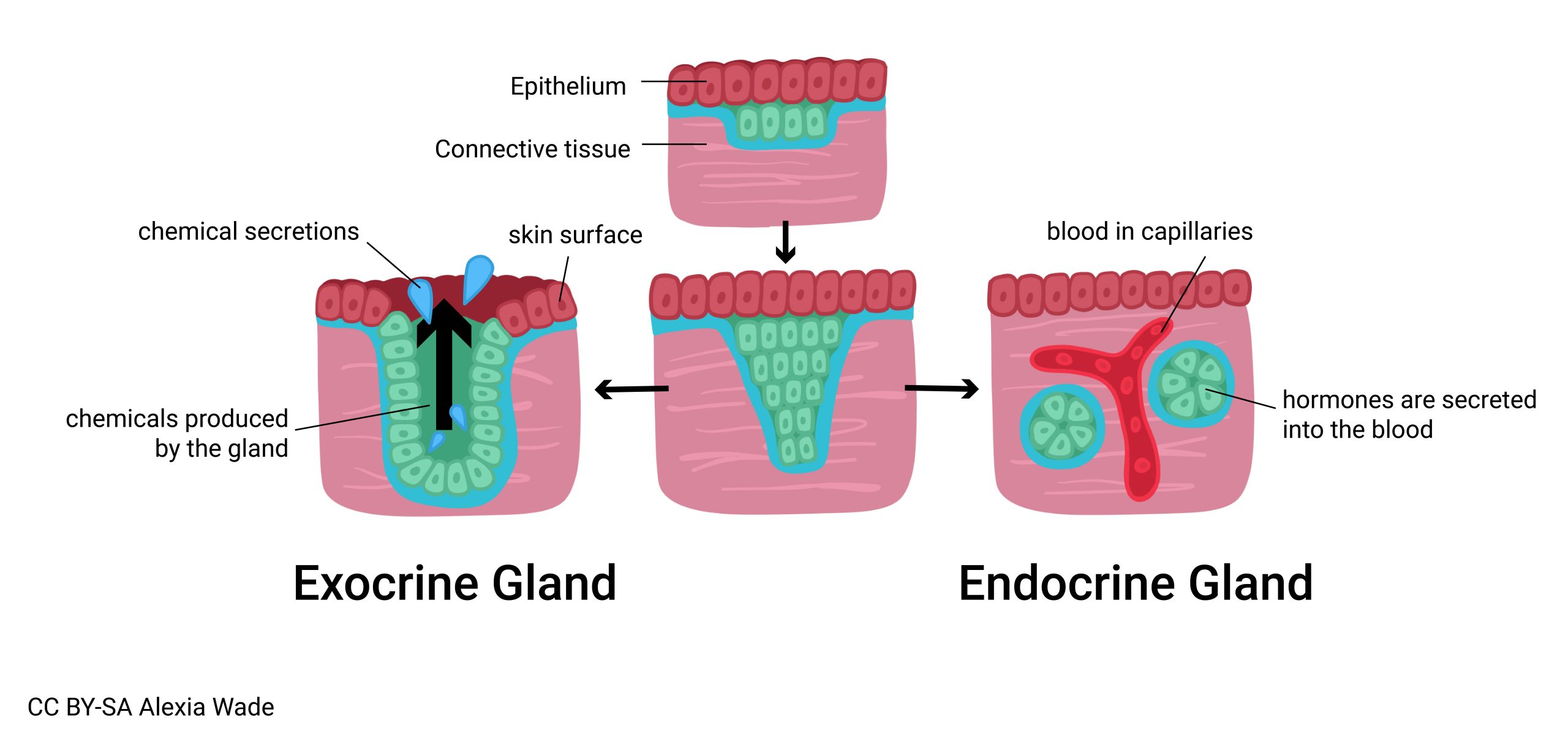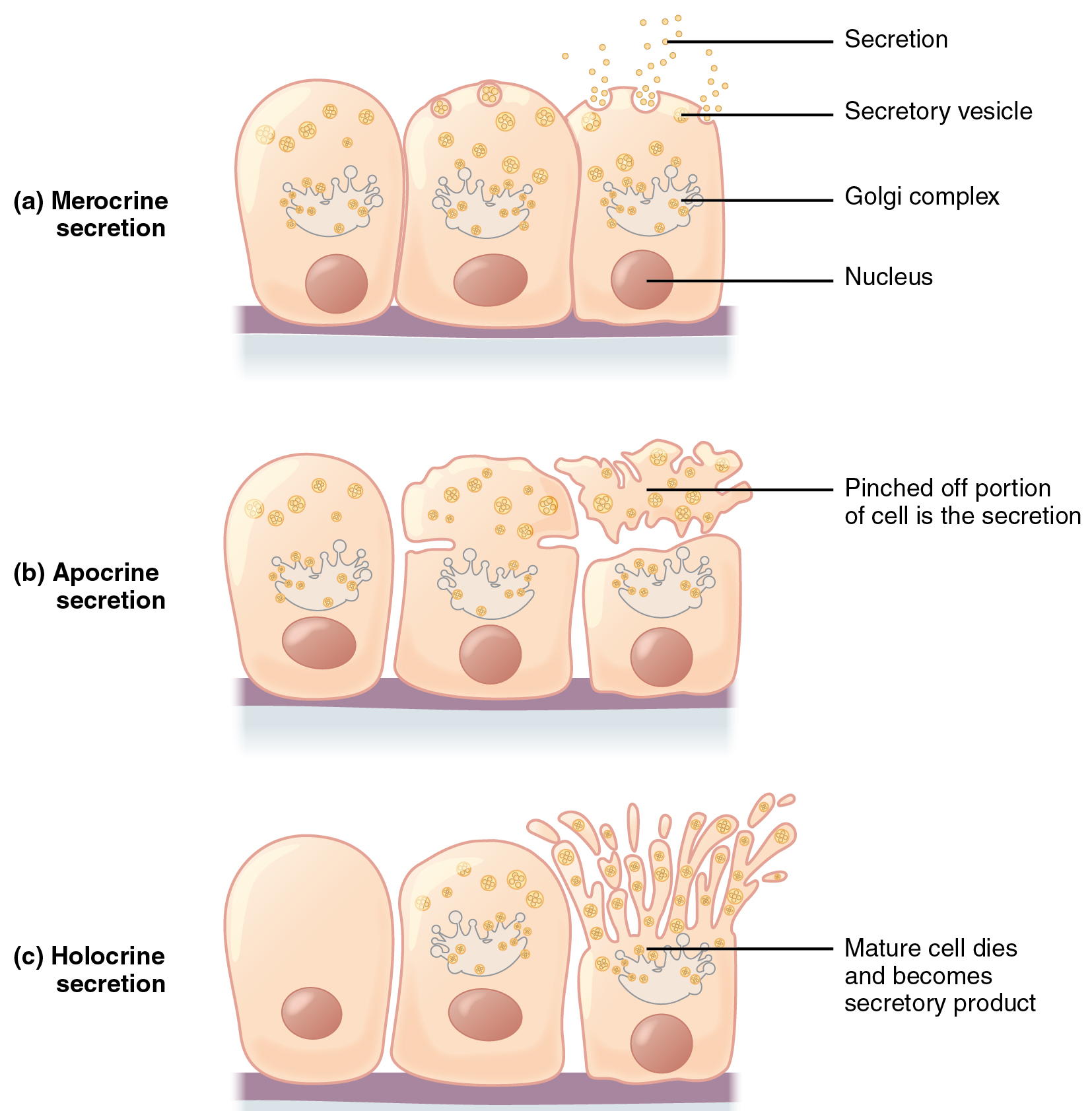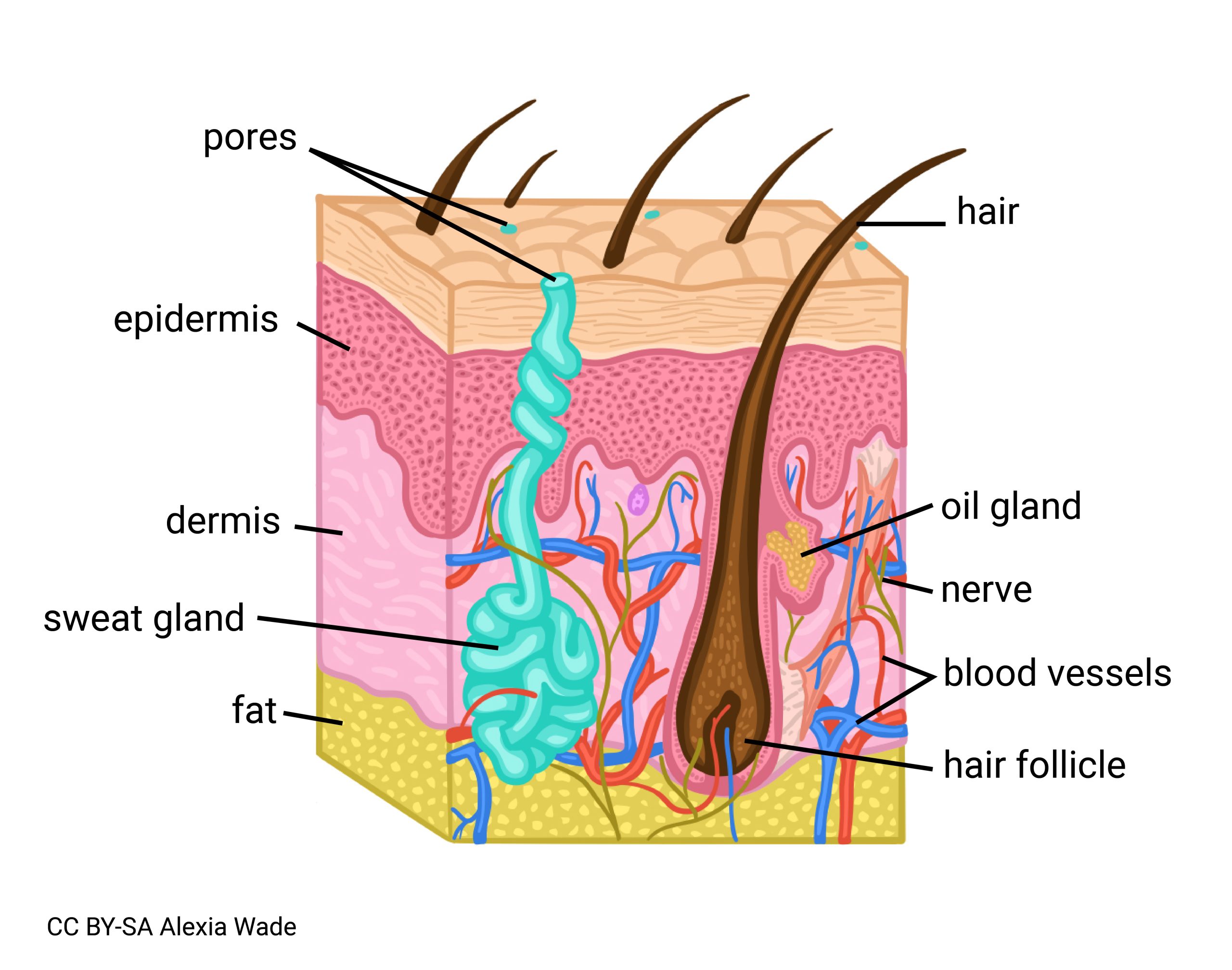Glandular Epithelium
Objective 7.4
7.4.1 Compare and contrast endocrine and exocrine glands.
7.4.2 Define the anatomical and functional classification of exocrine glands.
Glandular epithelium is responsible for secretions, the production of substances that are:
- released into the extracellular fluid and blood (endocrine glands)
- released into ducts which lead to the “outside” (skin or gut tube, for example: exocrine glands)

We’ll discuss endocrine glands and the hormones they release next semester, in Unit 14. In this unit, we’ll focus on exocrine glands.
Exocrine glands have ducts by which they secrete their products into a lumen or opening of a tract (like the digestive tract) or to the outside body. Endocrine glands do not have ducts, releasing hormones directly into the bloodstream where they are carried to a target cell (a cell that has a protein receptor for the hormone).
Exocrine glands have a duct, which conducts the secretory product to where it is supposed to end up, and a secretory portion, where the cells that make the glandular secretion are located.
Note the sweat gland, a type of exocrine gland, in this picture of the skin. Can you pick out the glandular portion and the duct?
There are three types of functional classifications of the cells that make up the secretory portion of the gland.
- In merocrine secretion, the protein is formed in the rough endoplasmic reticulum, as with any protein. In the Golgi, it‘s packaged into vesicles that can then fuse with the cell membrane on demand to release the cell‘s secretory product. Saliva and pancreatic enzymes are secreted in this way.
- Apocrine secretion begins like merocrine secretion, but the vesicles gather together in a little cell life raft which is then jettisoned and broken open, releasing the vesicle product. The male prostate and female mammary glands secrete their products in this way.
- Holocrine secretion is the most violent and destructive form of secretion. (Think “holocaust”.) The secretory product is made in the cytoplasm of the cell, and then the cell blows itself to bits, releasing the secretory product. Not surprisingly, the sebaceous glands of skin, which are over-active in teenagers, use this mode of secretion.

Media Attributions
- U07-036 © Wade, Alexia is licensed under a CC BY-SA (Attribution ShareAlike) license
- U07-037 © Wade, Alexia is licensed under a CC BY-SA (Attribution ShareAlike) license
- U07-038 405_Modes_of_Secretion_by_Glands_updated © OpenStax is licensed under a CC BY (Attribution) license


